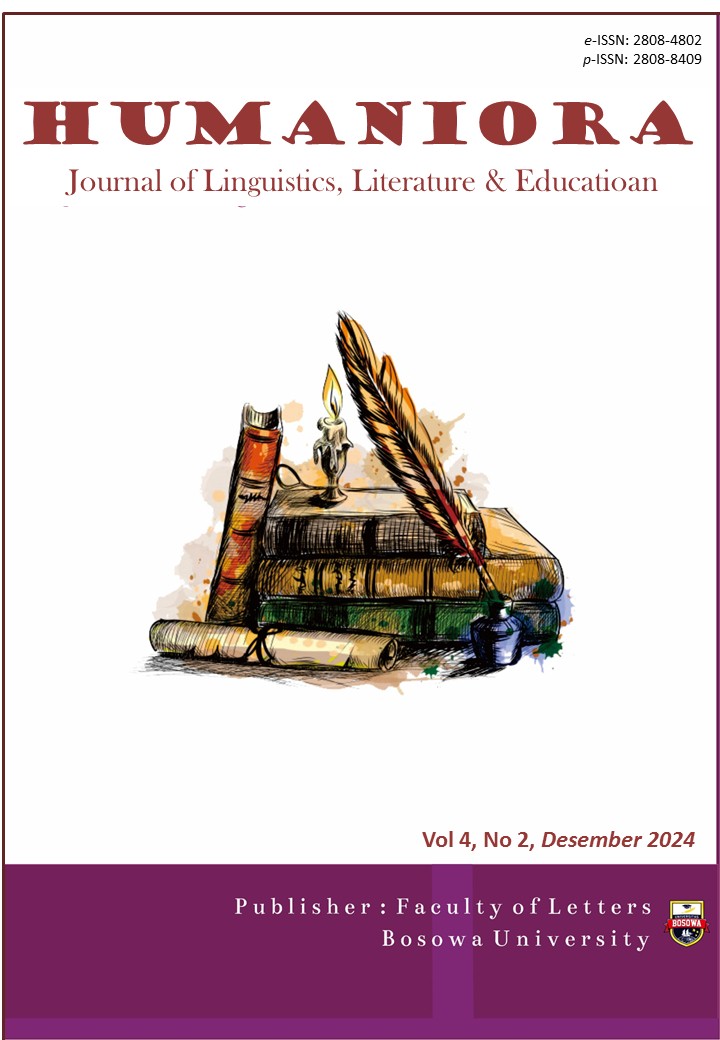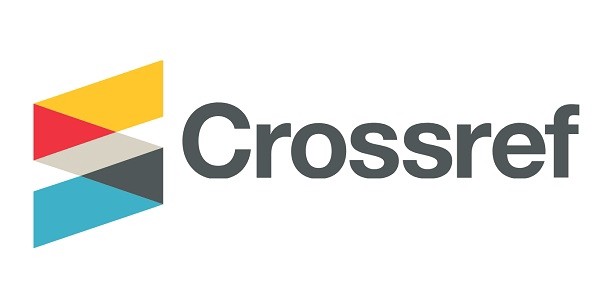Symbolic Meaning In The Traditional Dance Tua Reta Lo’u At Kajowair Village, Sikka District
DOI:
https://doi.org/10.56326/jlle.v4i2.4921Keywords:
Symbol Types, Tua Reta Lo,U Function, Sign SemioticsAbstract
The objective of the research was to find out the types of symbol, and the function of the symbol of the Tua Reta Lo’u dance at Kajowair Village, Sikka District. The method used in this study was a qualitative descriptive by applying the Charles Peirce semiotic theory the Types of Signs: Icon, Index, and Symbol. The types of symbol and the function of the symbol were analysed. Data were collected through observation, interview, video recording, and supporting documents. The results reveal that there were 10 parts of clothes both male and female in the Tua Reta Lo’u dance, 3 parts of traditional music, and 3 parts of movements in the Tua Reta Lo’u dance, had 3 types of signs including: Icon, Index, and Symbol. The clothes symbolized as beauty, protection, courage, mind control, and emotions. The traditional music symbolized of spirit and harmony. Whereas the movements symbolized of the courage, agility, and body balance. The function of the symbol of the clothes to show the strength, courage, and protection to the enemies. The traditional music had the function of the symbol to inspire the dancers and convey the message of the dance. Meanwhile, the had a function of the symbol as an expression of courage, agility, body balance, and showing off guts to the opponents.
References
Abidin, A. N., Safar, M., Asfar, A. M. I. T., Asfar, A. M. I. A., Nurannisa, A., Handira, A., & Azis, M. N. (2023). Analysis of the Symbolic Meaning and Philosophy Behind the Ritual Stages of Mappogau Sihanua. Journal of International Conference on Communication Science (3)1, 60-66)
Aditya, F. (2016). Preservation of the Maras Taun Traditional Ceremonial on National Character Values in the Sukamandi Village, Damar District, East Beliting Regency (Descriptive Study). Doctoral Dissertation: FKIP UNPAS
Ariani, S., Asanti, C., Purwanti. (2019). Makna Simbolik Upacara Adat Belian Sentiyu Di Desa Muang, Samarinda. Jurnal Bahasa dan Sastra. Samarinda: Universitas Mulawaman. 1(2), 419-432
Aswar, M. T., Sani, M. Y., & Basir, M. (2020). Function and meaning of symbolic fashion in Rambu Solo’ceremony. Europan Journal Research Social and Sciences. 8(3)
Asyrafunnisa, A. (2021). Symbolic Meaning in the Traditional Dance of Bugis Makassar, Pakarena Dance (A Semiotic Study). Tamaddun, 20(1), 26-31
Dadik, N., Sinulingga, J. (2020). Erpangir Ku Lau of the Karo Batak Ethnicity: A Semiotic Study. Undergraduate Journal. Medan: University of North Sumatra. 5(2), 165-250
Handayani, S. (2023). Prosesi Upacara Adat Momasoro Pada Suku Lauje: Kajian Semiotik. Kinesik. 10(3), 372-397.
Hidayati, F. D., Sarofa, F., Mahbub, M. T., & Anam, A. (2022). The Symbolic Meaning Of The Oncaran Tradition In The Wedding Ceremony Of The Pendalungan Community. Literasi: Jurnal Ilmiah Kajian Ilmu Humaniora, 1(1), 63-70
Jado, G. G., Sabaora, A. P. (2019). Analisis Komponen Biomotorik Yang Terdapat Pada Gerak Tarian Putra Tua Reta Lou Di Sanggar Budaya Bliransina Watublapi Desa Kajowair Kecamatan Hewokloang Kabupaten Sikka. Jurnal. Universitas Udayana. 7(1). 92-97
Melati, T. P., Atmaja, C., Qodri, M. S. (2019). The Meaning Of Cultural Symbols In Traditional Wedding Processions In Dompu District With Semiotic Study (Roland Barthes). Journal of Language, Literature, and Education. 1(2), 92-103
Mu’arrof, A. Q. (2019). Representasi Masyarakat Pesisir: Analisis Semiotika dalam Novel Gadis Pesisir Karya Nunuk Y. Kusmiana. In Prosiding Seminar Nasional Linguistik dan Sastra (SEMANTIKS) (1),71-78)
Nurmayanti, A., & Kd, N. (2021). A Semiotics Approach Symbolic Meaning Of Ogoh-Ogoh To Welcome Seclusion Day In Mamuju (Doctoral dissertation, Universitas Bosowa).
Peradantha, I. B. G. S., & Murda, M. I. M. (2020). Kajian Bentuk, Sumber Inspirasi Dan Makna Simbolis Motif Body Painting Etnis Padaido Di Papua: Study of Form, Source of Inspiration and Symbolic Meaning of Body Painting Motif of Padaido Ethnic In Papua. Jurnal Penelitian Arkeologi Papua dan Papua Barat, 12(1), 43-59
Pratama, Y. J. (2022). An Analysis of Symbolic Meaning on Jaran Pejanggik Dance. JISHUM: Jurnal Ilmu Sosial dan Humaniora, 1(1), 31-41
Shufya, F. H. (2022). Makna Simbolik Dalam Budaya “Megengan” Sebagai Tradisi Penyambutan Bulan Ramadhan (Studi Tentang Desa Kepet, Kecamatan Dagangan). Jurnal Ilmiah Dinamika Sosial, 6(1), 94-102
Sinulingga, J., & Tampubolon, F. (2020). The Meaning and Symbols of the Batak Karo Ethnic Ritual Ceremony: Study of Semiotics. Budapest International Research and Critics Institute (BIRCI-Journal): Humanities and Social Sciences, 3(3), 2343-2348
Teng, H. M. B. A. (2017). Filsafat kebudayaan dan sastra (dalam perspektif sejarah). Jurnal ilmu budaya, (5)1
Wahyuni, W. (2022). The Meaning of Culture in the Adeq Pattaungeng Tradition in the Tampaning Community in Soppeng Regency (Doctoral dissertation, Universitas Hasanuddin).
Wardhana, W. S. (2022). Symbolic Meaning Of Traditional Ceremony Of Batagak Pangulu In Batipuah Baruah Village, Batipuah District, Tanah Datar Regency (Doctoral dissertation, Sultan Syarif Kasim State Islamic University, Riau).
Wibisana, I. K. (2022). Symbolic Meaning Of Bali Dance Rejang Renteng In Luwu Timur District (Doctoral Dissertation, Universitas Bosowa).
Downloads
Published
How to Cite
Issue
Section
License
Copyright (c) 2024 Albertina Reynilda Eka Yani, Sudirman Maca, Asyrafunnisa Asyrafunnisa

This work is licensed under a Creative Commons Attribution 4.0 International License.










